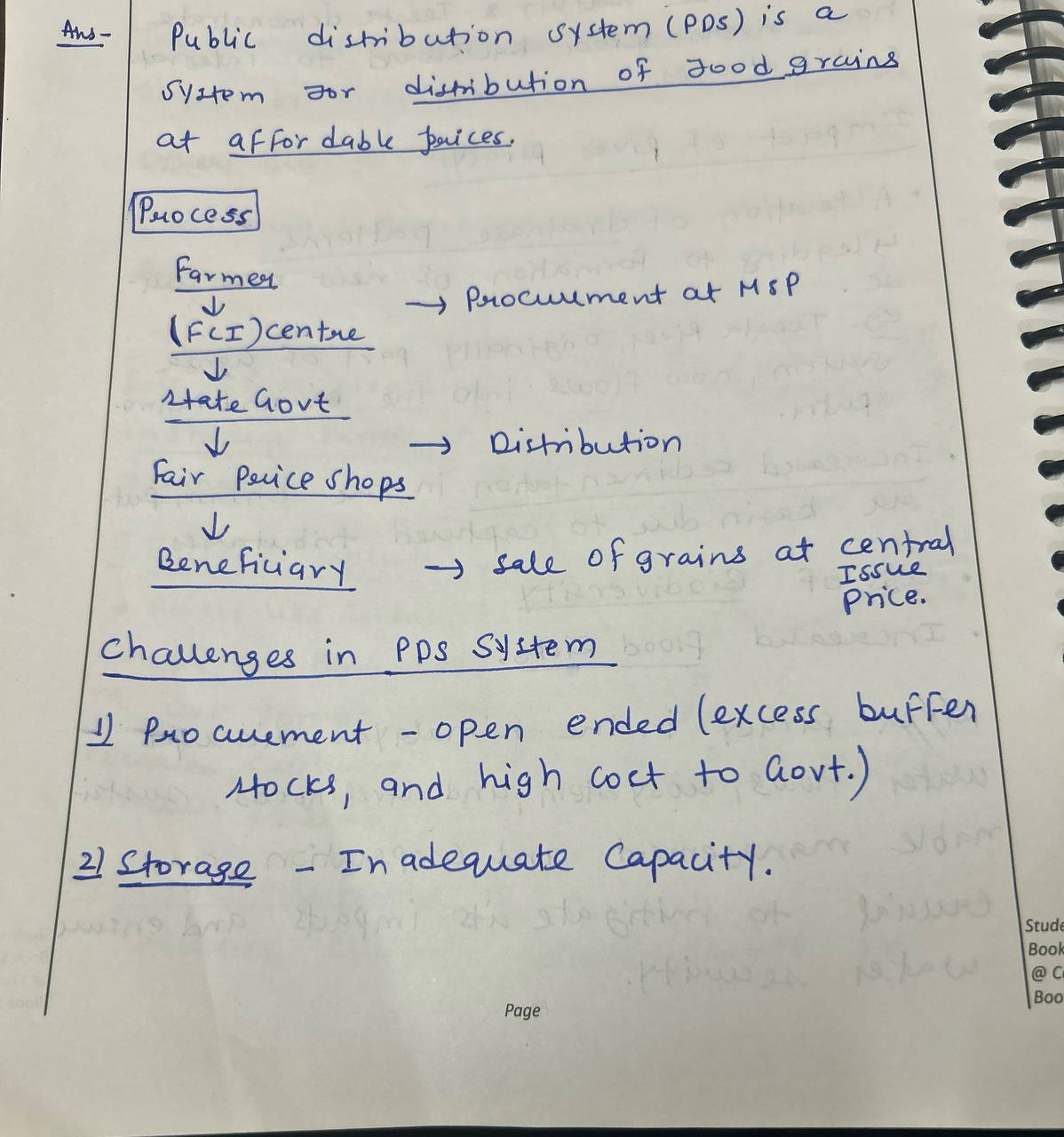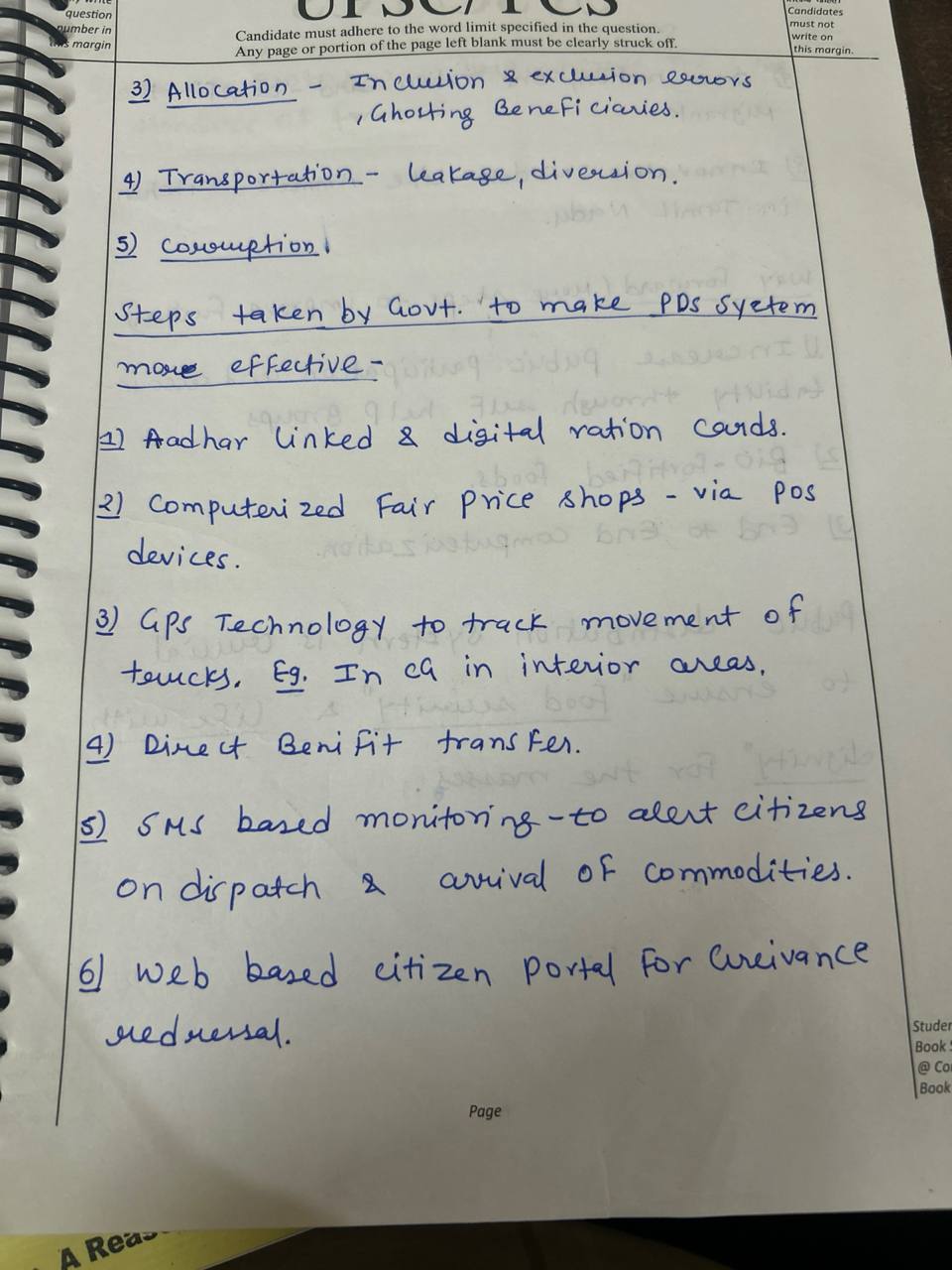Discuss the policy and regulatory frameworks necessary to enable the safe and responsible deployment of these technologies in the agricultural sector. Analyze the effects of using drones and unmanned aerial vehicles (UAVs) in precision farming, crop monitoring, and pest management.
Role of E-Marketplaces in Improving Agricultural Markets 1. Overview of E-Marketplaces in Agriculture E-Marketplaces have been increasingly recognized as pivotal in modernizing agricultural trade by enhancing market access, transparency, and efficiency. Notable examples include: National AgriculturaRead more
Role of E-Marketplaces in Improving Agricultural Markets
1. Overview of E-Marketplaces in Agriculture
E-Marketplaces have been increasingly recognized as pivotal in modernizing agricultural trade by enhancing market access, transparency, and efficiency. Notable examples include:
- National Agricultural Market (e-NAM): A pan-India electronic trading platform for agricultural commodities aimed at creating a unified national market.
- Other Online Trading Platforms: Platforms such as AgriBazaar, Ninjacart, and BigHaat that facilitate online trading and supply chain management for agricultural products.
2. Improving Transparency and Efficiency
e-NAM
- Unified Market Platform: e-NAM integrates physical markets (mandis) across states, providing a unified platform for trading agricultural commodities. This integration helps in reducing market fragmentation and provides farmers with more transparent price discovery.
- Example: Madhya Pradesh has seen increased transparency and better price realizations for farmers due to the integration of its mandis with e-NAM.
Online Trading Platforms
- Direct Access to Markets: Platforms like AgriBazaar enable farmers to sell directly to buyers, bypassing intermediaries. This direct access can lead to better price realization and reduced transaction costs.
- Example: Ninjacart facilitates bulk procurement from farmers and delivers directly to retail chains, reducing the number of intermediaries and improving efficiency in the supply chain.
3. Enhancing Market Integration
e-NAM
- Inter-State Trade: e-NAM allows farmers to trade across state boundaries, which helps in balancing demand and supply and reduces price volatility.
- Example: Punjab and Haryana farmers have benefitted from better price realization by accessing markets in neighboring states through e-NAM.
Online Trading Platforms
- Nationwide Reach: Online platforms help farmers access markets beyond their localities, thereby integrating regional markets into the national market.
- Example: BigHaat connects farmers in remote areas with buyers across the country, expanding their market reach and improving integration.
4. Factors Influencing Adoption by Farmers
Technological Barriers
- Digital Literacy: Many farmers, particularly in rural areas, face challenges related to digital literacy and access to technology, which can hinder the adoption of e-marketplaces.
- Example: In Bihar, a significant proportion of farmers lack the necessary digital skills and access to smartphones or computers, limiting their ability to use e-NAM effectively.
Infrastructure Constraints
- Internet Connectivity: Reliable internet connectivity is crucial for the successful operation of e-marketplaces. Poor infrastructure can limit the effectiveness of these platforms.
- Example: In Northeast India, inadequate internet connectivity hampers the use of online trading platforms and e-NAM, reducing their impact on local farmers.
Awareness and Training
- Lack of Awareness: Many farmers are unaware of the benefits and functionalities of e-marketplaces. This lack of awareness can slow down the adoption rate.
- Example: Uttar Pradesh has seen slow adoption rates for e-NAM due to insufficient awareness and training programs for farmers.
Regulatory and Policy Issues
- Regulatory Framework: The success of e-marketplaces depends on supportive regulatory frameworks. Inconsistent policies across states can affect market integration and efficiency.
- Example: Different states have varying policies on market fees and commissions, which can complicate the implementation of e-NAM and affect farmer participation.
5. Strategies to Enhance Adoption
Improving Digital Literacy
- Training Programs: Implement comprehensive training programs to improve digital literacy among farmers, enabling them to effectively use e-marketplaces.
- Recommendation: Collaborate with agricultural extension services and NGOs to provide training and support.
Enhancing Infrastructure
- Invest in Connectivity: Strengthen rural internet infrastructure to ensure reliable access to e-marketplaces.
- Recommendation: Expand initiatives like Digital India to improve internet connectivity in remote agricultural areas.
Increasing Awareness
- Awareness Campaigns: Launch awareness campaigns to educate farmers about the benefits and usage of e-marketplaces.
- Recommendation: Utilize local agricultural fairs, community meetings, and media to promote e-NAM and other online platforms.
Streamlining Regulations
- Uniform Policies: Advocate for uniform policies across states to simplify market operations and reduce regulatory barriers.
- Recommendation: Work with state governments to harmonize regulations related to market fees, commissions, and trading practices.
6. Conclusion
E-marketplaces, including e-NAM and various online trading platforms, play a crucial role in enhancing the transparency, efficiency, and integration of agricultural markets. They offer significant benefits by improving market access and price discovery for farmers. However, the adoption of these technologies is influenced by factors such as technological barriers, infrastructure constraints, lack of awareness, and regulatory issues. Addressing these challenges through targeted interventions, investment in infrastructure, and awareness campaigns can help maximize the potential of e-marketplaces and contribute to a more efficient and inclusive agricultural market system in India.
See less










Impact of Drones and Unmanned Aerial Vehicles (UAVs) in Agriculture 1. Overview of UAVs in Agriculture Drones and unmanned aerial vehicles (UAVs) are increasingly being used in precision farming to enhance agricultural productivity, improve crop monitoring, and manage pests more effectively. These tRead more
Impact of Drones and Unmanned Aerial Vehicles (UAVs) in Agriculture
1. Overview of UAVs in Agriculture
Drones and unmanned aerial vehicles (UAVs) are increasingly being used in precision farming to enhance agricultural productivity, improve crop monitoring, and manage pests more effectively. These technologies offer several advantages over traditional methods:
2. Impact on Precision Farming and Crop Monitoring
Enhanced Data Collection
Improved Resource Management
Early Detection of Issues
3. Impact on Pest Management
Targeted Application
Improved Efficiency
4. Policy and Regulatory Frameworks
Current Regulations
Challenges and Gaps
Policy Recommendations
Promote Research and Development
Training and Education
5. Conclusion
The use of drones and unmanned aerial vehicles (UAVs) in precision farming, crop monitoring, and pest management offers significant benefits, including enhanced data collection, improved resource management, and targeted pest control. However, effective deployment of these technologies requires a robust policy and regulatory framework that addresses current challenges and supports innovation. Streamlining regulations, promoting research, and providing farmer training are essential steps to enable the safe and responsible use of drones in agriculture, ultimately contributing to increased productivity and sustainability in the sector.
See less